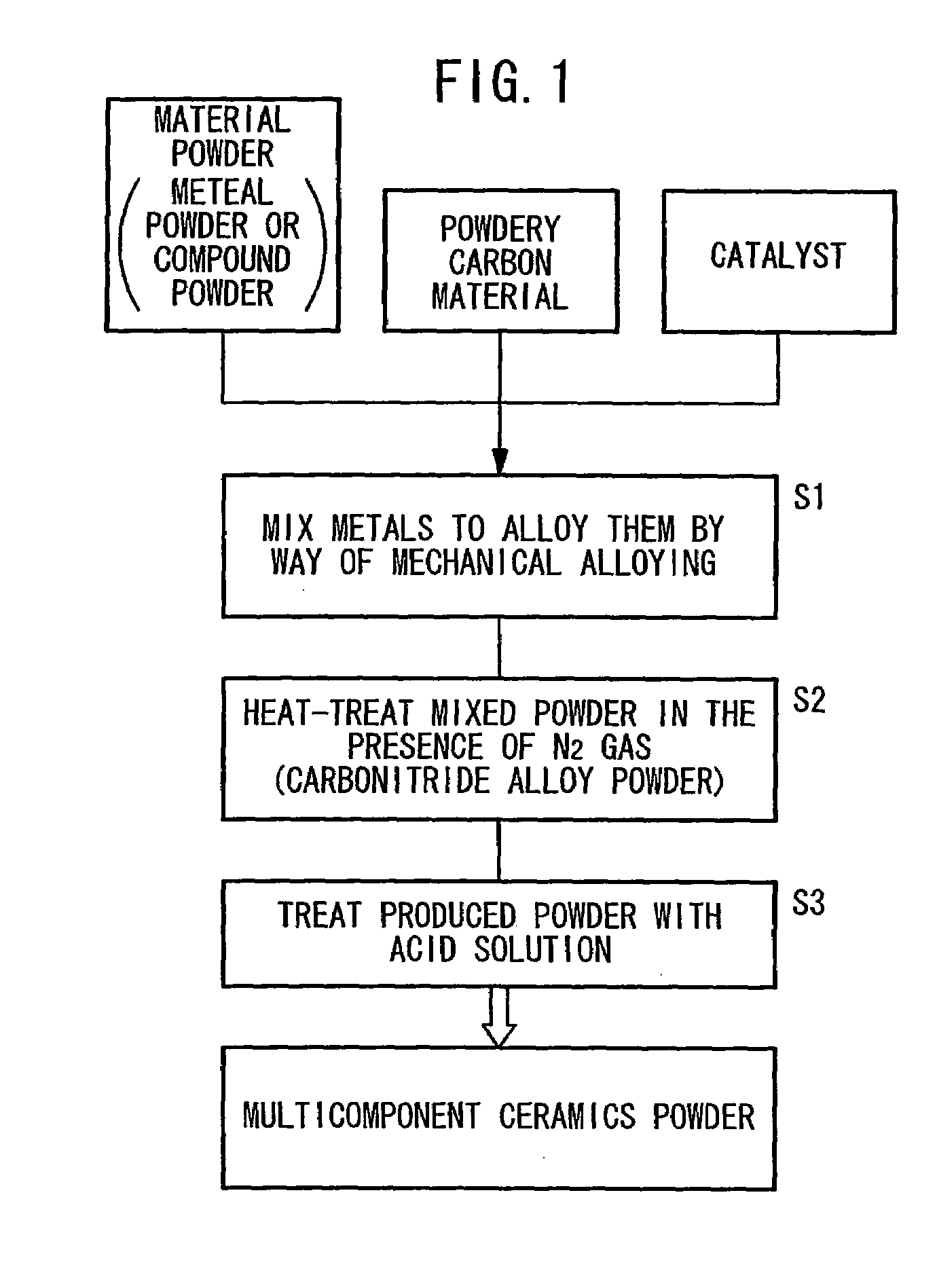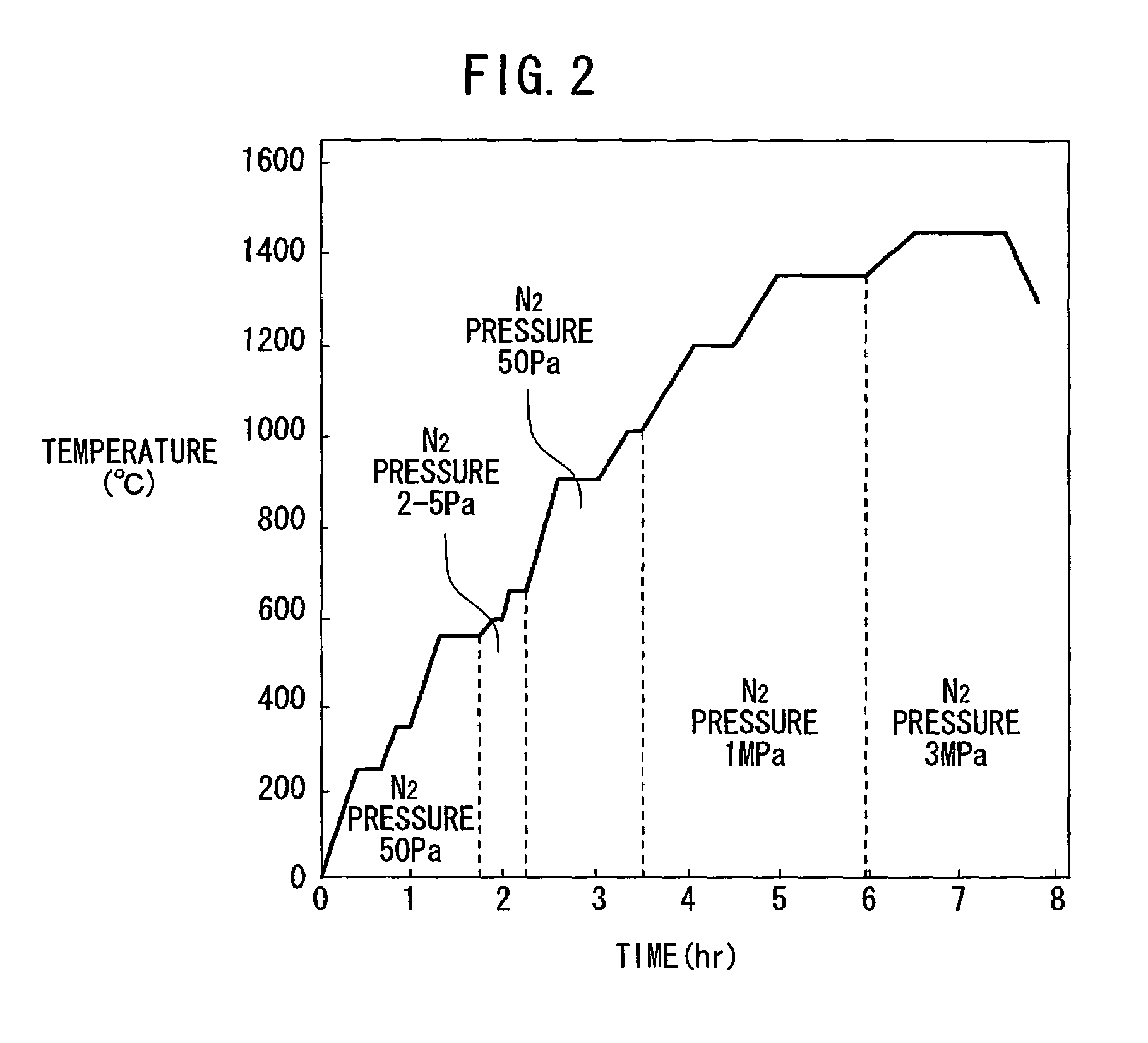Multi-element ceramic powder and method for preparation thereof, and sintered compact and method for preparation thereof
- Summary
- Abstract
- Description
- Claims
- Application Information
AI Technical Summary
Benefits of technology
Problems solved by technology
Method used
Image
Examples
##ventive example 1
INVENTIVE EXAMPLE 1
[0093]1. Characteristics of a Sintered Body:
[0094]A W powder, a Cr powder, at least one of a hydrogenated titanium powder, a hydrogenated zirconium powder, and an Hf powder, and at least one of a hydrogenated vanadium powder, an Nb powder, and a Ta powder were used as a material powder, and carbon black in an amount ranging from 3.0 weight % to 11.5 weight % was added to 100 weight % of the material powder. Al in an amount equal to or smaller than 3 weight % was added, if necessary, to the material powder. Mg, Mg, and Ni were added as a catalyst, and mixed together with the material powder. They were mixed under such conditions that W, Cr, at least one of Ti, Zr, and Hf, at least one of V, Nb, and Ta, and Al, if added, are alloyed by way of mechanical alloying.
[0095]The alloy powder in the mixed powder thus produced was carbonitrided by being heat-treated according to a pattern shown in FIG. 2 in a nitrogen atmosphere, thus providing various multicomponent ceramic...
##ventive example 2
INVENTIVE EXAMPLE 2
[0143]3. Method of Manufacturing a Powder According to the Second Embodiment:
[0144]85.5 parts by weight of a WC powder having an average particle diameter of 1 μm, 15 parts by weight of a TiC powder having an average particle diameter of 1.5 μm, 1 part by weight of a carbonyl nickel powder having an average particle diameter of 0.2 μm, and 0.5 part by weight of a Mg powder were mixed together in a solvent of ethyl alcohol. Then, after the solvent was adjusted to 3 parts by weight, the mixed powder together with the solvent was filled in a cavity of a mold having a passage. No binder was added.
[0145]While the solvent of ethyl alcohol was being discharged out of the cavity through the passage in the mold, the mixed powder was pressurized under 120 MPa, producing three cylindrical molded bodies each having a diameter of 40 mm and a length of 60 mm.
[0146]Then, the surface of one of the three cylindrical molded bodies was coated with a mixed powder comprising an Al pow...
PUM
| Property | Measurement | Unit |
|---|---|---|
| Temperature | aaaaa | aaaaa |
| Temperature | aaaaa | aaaaa |
| Percent by mass | aaaaa | aaaaa |
Abstract
Description
Claims
Application Information
 Login to View More
Login to View More - R&D
- Intellectual Property
- Life Sciences
- Materials
- Tech Scout
- Unparalleled Data Quality
- Higher Quality Content
- 60% Fewer Hallucinations
Browse by: Latest US Patents, China's latest patents, Technical Efficacy Thesaurus, Application Domain, Technology Topic, Popular Technical Reports.
© 2025 PatSnap. All rights reserved.Legal|Privacy policy|Modern Slavery Act Transparency Statement|Sitemap|About US| Contact US: help@patsnap.com



